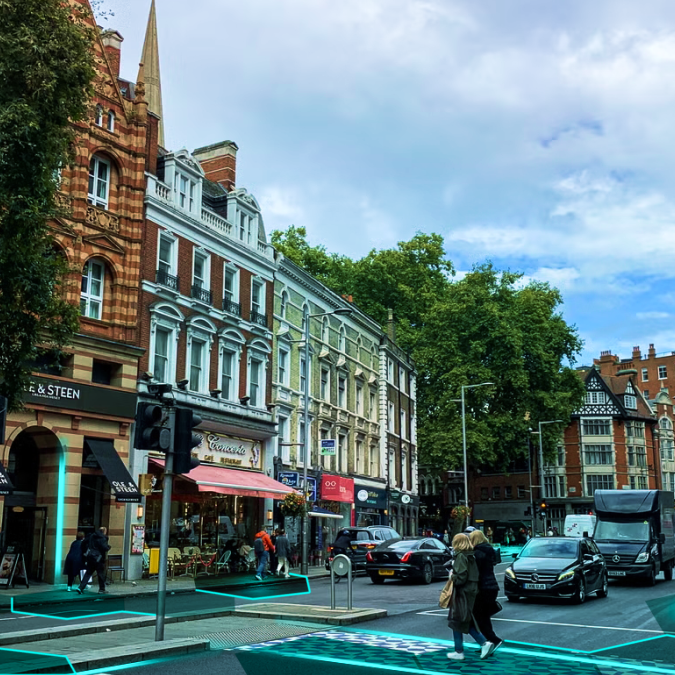UK Budget Hikes May Slow Consumer Spending
UK Budget Impact on Retail: What Rising Costs Mean for Consumer Footfall in 2025
The recent UK budget raises costs for businesses, potentially pushing up prices for consumers in a move to restore profitability. While seasonal spending may boost retail footfall temporarily, additional economic pressures and lingering utility costs could culminate in reduced consumer confidence in H1 2025, impacting footfall and spend. Major Retail Centres are expected to be able to weather the storm, however traditional High Streets and Town Centres may be hit, though this is expected to vary by region.
Key takeaways
Increased Business Costs
New budget measures, including a rise in minimum wage, reduced relief for business rates and taxes on pension contributions, will raise operational costs for UK businesses, particularly in retail and hospitality.
Christmas Footfall Boost
Consumer footfall is expected to stay high through the Christmas season as shoppers prioritise festive spending, but this resilience may fade come January.
Reduced Spending Power
Rising business costs and utility expenses could drive inflation back up, squeezing household budgets and limiting consumer spending.
Value-Driven Retail Strategies
Retailers that focus on competitive pricing and value will be better positioned to attract customers tightening their budgets amidst a lack of consumer confidence.
The recent UK budget announcement from the Chancellor introduced several impactful measures, primarily focused on employers.
Minimum wage increases and new tax obligations on company pension contributions are set to push up operational costs for many businesses, especially those in labour-intensive industries. While this may benefit employees with higher wages, the broader economic ripple effects could be felt by consumers in various ways as retailers and service providers seek to offset these increased costs.
Compounding these factors, the macroeconomic climate in the UK is showing positive signs, with GDP growth outpacing projections. However, rising utility costs and the potential for businesses to pass on new costs to consumers could drive inflation back up, which may curb consumer spending power over the next several months.
Shoppers navigate rising prices as new budget measures impact UK retail costs.
Christmas Spending Resilience: A Short-Lived Boost for Retail?
As we head into the Christmas season, retail footfall is expected to remain robust. The festive period traditionally sees an uptick in consumer spending, with high streets, shopping centres and retail parks busier than usual. This seasonal resilience may hold out through December as Christmas shopping takes precedence. However, the new year may bring a swift change, as consumers, facing increased prices from businesses looking to protect their profit margins, might limit discretionary spending. This shift could particularly impact non-essential retail sectors and hospitality businesses that typically see higher January footfall due to post-Christmas sales and seasonal activities.
Economic Pressures Signal a Spending Squeeze in early 2025

Certain consumer groups and regions are likely to be more affected than others by the evolving landscape. Households with lower disposable incomes, for instance, may feel the squeeze sooner, given that they have less financial flexibility to absorb price increases on essentials like food and energy. This could result in a more pronounced dip in footfall in local high streets and town centres, where these consumers are more likely to shop for essentials.
Meanwhile, more affluent areas and retail zones that cater to higher-income brackets, such as major city centres and luxury retail destinations, may see a softer impact. Higher-income consumers are generally more resilient to economic fluctuations, so their spending patterns might not change as drastically.
In the coming months, retailers will likely experience heightened sensitivity to price increases, as consumer behaviours adjust to reflect tighter budgets. By mid-2025, if inflationary pressures stabilise and economic growth remains strong, consumer confidence and footfall levels could gradually recover. Until then, larger retailers that can offer value-driven experiences and competitive pricing are likely to fare best as consumers seek to stretch their purchasing power amidst an uncertain economic landscape. Tracking store performance will be imperative for retailers in order to survive the coming months.
Looking to track location and consumer dynamics?
Our experienced team can demonstrate how to use location intelligence and analytics to augment a wide range of use cases, including:
- Weekly Footfall and Spend reporting across your network
- Benchmarking performance across locations
- Optimise your existing store portfolio
- Improve the effectiveness of marketing
- Understand competitor landscape
- Monitor complimentary-brand market entry and exits
- Identify thriving locations for new stores

